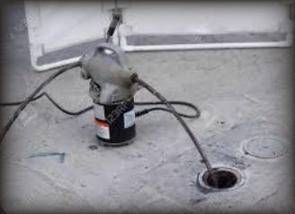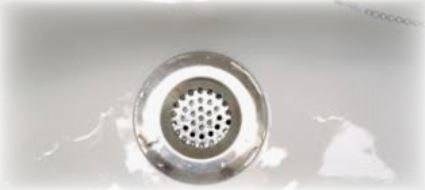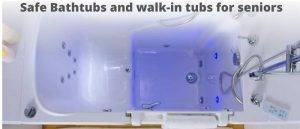A slowly draining bathroom is not fun. It makes the bathroom wet, slimy, and smell bad. Most bathroom drains slow down because of build-up. Then others drown slowly even without being clogged.
Over time, soap, dirt, loose hair, skin flakes, and other products form a layer on the inner walls of drain pipes. This gunk continues to accumulate and reduces water flow from the bathroom.
In this comprehensive guide, we seek to provide solutions to slow-draining drains and explore the possible causes. Coupled with basic cleanliness tips, this post will open you to enjoying your bathroom the way you should. Read on.
How to Fix a Slow-Draining Bathtub
To fix a slow-draining bathroom drain that is not clogged, you need to remove any debris, use a plunger, remove the drain stopper, or use a plumber snake to clear the drain. After that, inspect the drain and use a plumber’s snake to access and unblock any debris or materials causing the drainage problem.
Let’s explore these steps in detail.
To fix a slow-draining bathtub, you can take the following steps;
1. Clear out any debris
Start by clearing out any soap, hair, and other debris that has accumulated in the bathtub. Wear rubber gloves and remove all the matter covering the drain.
Discarding the trash by hand may prove to be sufficient in solving the drainage problem.
Run the water to check whether that improves the flow. If the effort is not enough, proceed to the next step.
2. Use a Plunger to dislodge debris
The success of this method depends on the drain design, the nature, and the location of the stoppage.
Plunging can loosen and help to dislodge hair and other debris that has built up in the pipe. The Plunger needs suction to work.
So to create a better seal, it is essential to ensure you apply petroleum jelly to the edge of the suction pad.
Add water to the bathtub such that the plunger pad is submerged. Next, vigorously plunge the bathtub drain opening.
If the stoppage is deep and made of hard matter such as hair, this Plunger method may not be effective.
Below are the best two plungers that can do that job well;
3. Remove the drain stopper to inspect and gain access
Use a screwdriver to take off the overflow plate and remove the drain stopper. A small lever operates the stopper.

It works by dropping and lifting a plunger to close and open the drain.
Where the stopper is not functioning correctly, it can get stuck in a semi-opened position and restrict water flow.
You can adjust the position of the Plunger using the lock nuts holding the Plunger to the rod.
If the stopper is working well, then the cause of the slow water drain is likely to be a blockage.
It is also advisable to remove and check the drainage strainer because often the Hair and soap collect underneath it.
Find out whether the sieves can be removed manually or if you need a screwdriver to take it off.
4. Use a plumber’s Snake
The plumber’s snake or drain snake is a cable auger.

It is a metal cable with a device at the end that you push into a drain pipe.
The drain snake method has a high success rate in clearing blockages.
Push the snake down the drain until the stoppage is reached.
Once you have removed the drain stopper, you can access the pipe through the overflow.
You can also gain access to the drain through the drain opening after removing the drain filter.
When you reach the blockage, turn the auger handle and bring it back up. This is one of the ways to unclog your sink as discussed in another article.
Check the drain by running water to make sure that the stoppage is gone. You may have to repeat the process a few times.
Check the best plumber’s snake clog removers.

5. Fix slow draining with sink baking soda vinegar
This method is ecologically preferable and doesn’t damage your plastic pipes. It can help to clear moderate blockages.
Remove the residue and other debris at the drain opening and pour a pot of very hot water down the duct.
Next, pour half a cup of baking soda into the drain opening and follow it up with a cup each, of vinegar and boiling water.
You can use a tool such as a spoon to push the solution down into the drain. Cover the drain opening with a stopper and let it sit for five to ten minutes.
The stopper prevents the baking soda and vinegar from coming back out. The active chemical reaction breaks down most blockages and also cleans the drain well.
Remove the stopper and run hot water through the drain for a few minutes to check if the blockage is gone.
This method will also clean stubborn bathroom stains that could be stuck on the drain or the surface of the tub.
Why bathroom sink drain slowly and not get air
Often, the problem of a slow bathroom drain is caused by an air trap or airlock at the opening of the duct. The airlock is an air pocket trapped in the pipe. As a result, it obstructs the flow of the water, causing the water to back up at the drain opening.
There are two reasons why air traps in the bathroom drain occur.
1. Sink drain hindrance

First, the bathroom sink drain opening can hinder the water flow.
It can happen when the strain has many small holes that are very close to the center of the water outlet, such as a grid filter.
It can also occur when the pop-up plunger doesn’t move up high enough.
2. Aerated water from the faucet spout
While it helps to keep your clothes and countertop neat by preventing water from splashing off your hand.
It also reduces the weight of the water as it hits the bottom of the sink. The air bubbles make the water weigh less than usual and may cause it to pool more readily.
How to prevent bathroom sink from draining slowly
This problem can be avoided by ensuring that the plumbing is done such that water drops some inches up on the sink.
It should fall directly on the center of the sink drain opening. It gives the water some time to get rid of the air bubbles.
There are adjustable pop-up plungers that can be set to rise higher and ensure smooth and unhindered water.
A similar drain can replace an improperly installed grid filter with a handset pop-up.
How to fix a slow bathroom drain when clogged
Clear the standing water from the bathroom and remove all the debris at the drain opening. You can use the Plunger and the plumber’s snake methods to try and clear the clog.
1. Using Commercial clog removers
If the above methods are not sufficient, you can try the chemical clog remover. Commercial clog removers are chemical cleaners designed to unclog drains.
Make sure you read and follow the instructions carefully. Wear gloves and goggles to protect your hands and eyes. Pour the chemicals down the bathroom drain opening as directed.
Here is one of the best chemical commercial clog removers.
Avoid mixing different chemicals because they can produce poisonous gases.
Remember that the wrong use, as well as the frequent application of chemicals, will damage your drainage pipes.
2. Call a Plumber
If you are looking to save money, this is a measure of the last resort. However, at times, it is the best thing to do.
Using a professional saves time and spares you from tedious and unpleasant maintenance tasks. It also ensures that your drainage system is well maintained.
If it is difficult to remove the clogging or for any other reason, don’t hesitate to get help from your professional plumber.
Conclusion
Use the above methods to fix your slow-draining bathroom sink. Act as early as possible. A slow drain can be a frustrating plumbing problem.
The goop and water seem to take an eternity to run out, and what is worse, it always leaves a greasy deposit in your bathroom.
The deposits that naturally build up in the drain pipes over time reduce their size and slow the water flow.
It is a drainage issue that happens usually and cannot be avoided. The best solution is to clean the drain to maintain smooth water flow regularly.

I am a homeowner excited by various innovative products and solutions that make life better. I am happy to share such ideas and reviews of home and related products.

